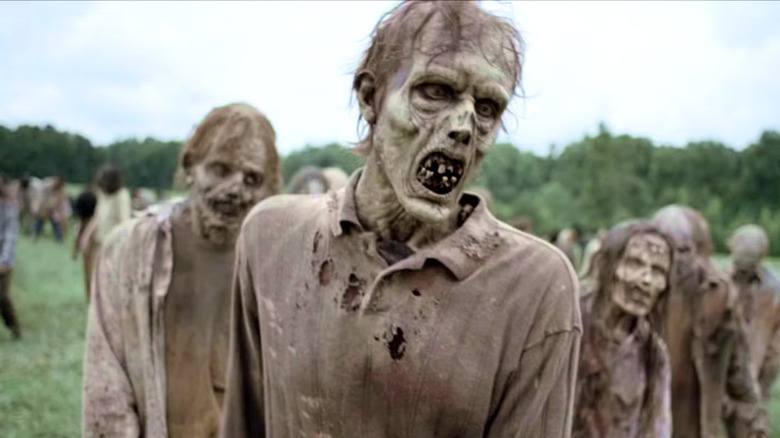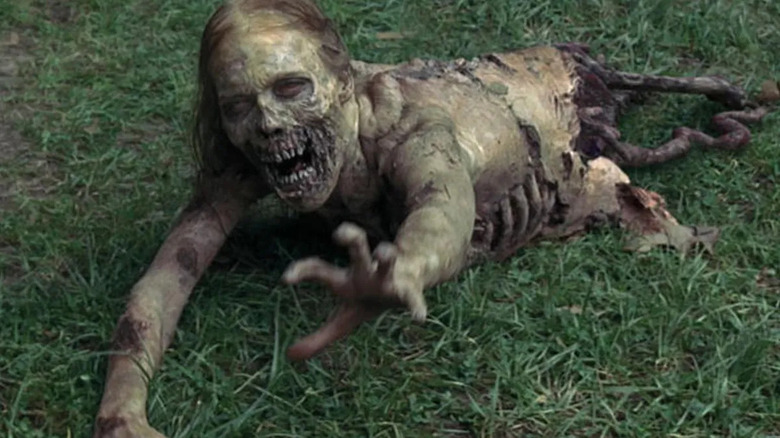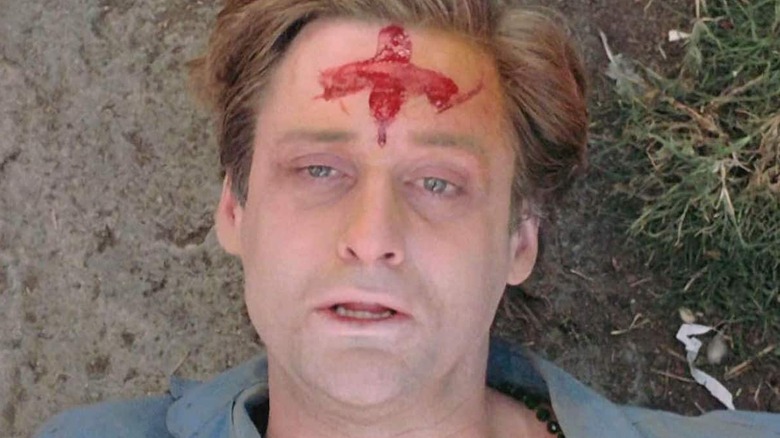Could The Walking Dead Happen In Real Life? What Experts Have To Say
Zombie fiction is truly terrifying because it's pretty difficult to stop the undead, and their tendency to either crave flesh (or brains) or bite new victims out of rage means they bring a nasty existential threat, too. No one wants to become a zombie, and the potential to turn makes death by zombie even worse than simply being eaten alive. The success of shows like AMC's "The Walking Dead" has led people to wonder: could zombies ever really exist? There are different kinds of zombies, like the fungal-infected monsters on "The Last of Us" and the Rage Virus-infected of the "28 Days Later" franchise, but what about the actual walking dead? Could corpses ever continue to act, even as they decomposed?
The "walkers" of "The Walking Dead" are deadly because they not only infect others with their bites, but they are tough to defeat, requiring significant damage to the brain to take them down. That's great for storytelling purposes, but let's see what some experts have to say about the actual scientific possibility of facing down undead zombies.
The walking dead are a scientific impossibility
The short and sweet of it is no, undead zombies do not and cannot exist. Speaking with Canada's National Post, McMaster University associate professor of internal medicine Dr. John Neary explained that "the brain requires a constant uninterrupted flow of blood containing glucose and oxygen" in order to keep functioning in any way, which means that all of those walkers with their organs rotted away or destroyed with weaponry wouldn't be able to continue on. That makes the talking walkers, the Whisperers, all the more impossible, but let's say that the virus that caused the zombie outbreak somehow keeps the brain going independent of all of the other body systems — could the dead continue to walk even as their bodies started to rot away?
To answer that, LiveScience spoke with Texas-based mortician Melissa Unfred, who broke down the disgusting details of how bodies decompose. While the zombies of "The Walking Dead" mostly mimic actual states of decay, she notes that zombies who have become totally desiccated wouldn't be able to move any longer. Without muscles, tendons, and solid skin holding everything together, movement becomes extremely difficult. Maybe that's the reason for their trademark zombie shuffle, because as Unfred said, "[...] if they were to start running, I think their legs would fly off." As funny as that would be, it's not exactly scary, so no wonder "The Walking Dead" chose to take a few liberties with the science of decay. She also pointed out that there simply aren't enough bloated zombies in the franchise, given how common corpse bloating actually is, but maybe that's for the better. One bloated zombie in a well was more than enough.
What about living zombies?
Clearly the walking dead are an impossibility for a number of reasons, but there has been real scientific discussion over the zombies of Haitian vodou, where a combination of herbs and a kind of hypnosis puts a person into a trance where they are mindless, controlled drones. The terrifying practice of creating "zombis" was documented by visitors to Haiti in the early and mid-20th century, though there is some doubt about the veracity of their stories. In Zora Neale Hurston's "Tell My Horse," she reveals a photograph of one supposed zombi, a woman who has been kept in that state for some time, but perhaps the most widely known "true" zombi story comes from anthropologist Wade Davis, who wrote "The Serpent and the Rainbow: A Harvard Scientist's Astonishing Journey into the Secret Societies of Haitian Voodoo, Zombies, and Magic."
"The Serpent and the Rainbow" was made into a film by Wes Craven, and while it's definitely fictionalized it depicts the closest thing we've ever gotten to a scientifically possible "zombie" onscreen. The dead can't walk, but maybe it's the living we really need to watch out for, anyway.


